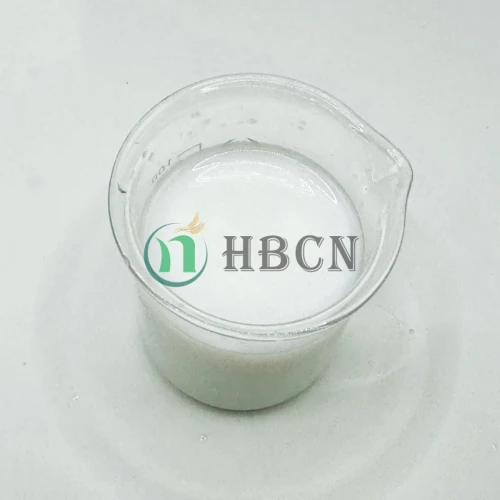
Nov . 06, 2024 19:07 Back to list
Premium Imidacloprid and Moxidectin for Effective Pest Control Solutions
High-Quality Imidacloprid and Moxidectin An Overview of Key Insecticides in Pest Management
In the world of agricultural practices and pest management, the effective control of insect pests is crucial for ensuring healthy crop yields and livestock management. Imidacloprid and moxidectin are two high-quality insecticides that have garnered significant attention due to their efficacy in pest control and their relatively favorable safety profiles when used correctly. This article explores the characteristics, modes of action, applications, and benefits of these insecticides.
Understanding Imidacloprid
Imidacloprid belongs to the neonicotinoid class of insecticides, which are synthesized to mimic the insect neurotransmitter acetylcholine. It is primarily used to control a wide array of sucking and chewing insects, making it a popular choice among farmers and agricultural professionals. The mechanism of action of imidacloprid involves binding to nicotinic acetylcholine receptors in the nervous system of insects, leading to paralysis and ultimately death. This rapid action ensures that infestations can be effectively managed within a short period.
Imidacloprid's applications extend beyond agriculture; it is also commonly used in household pest control products. Its systemic properties allow it to be absorbed by plants, offering protection against pests that invade crops. Additionally, imidacloprid is often employed in veterinary medicine for flea and tick control in pets, highlighting its versatility.
The Role of Moxidectin
Moxidectin, similar to imidacloprid, is widely recognized for its effectiveness in pest control. However, it belongs to the milbemycin class of compounds, which are derived from naturally occurring soil microorganisms. Moxidectin is particularly notable for its application in treating parasitic infections in animals, making it an essential agent in veterinary parasitology.
The mechanism of action of moxidectin involves the modulation of glutamate-gated chloride channels in the nervous system of parasites, leading to paralysis and death. This distinct mode of action provides an alternative that can be particularly effective against resistance displayed by some pests to traditional treatments.
high quality imidacloprid moxidectin

Benefits of Using Imidacloprid and Moxidectin
1. Efficacy Against a Wide Range of Pests Both imidacloprid and moxidectin demonstrate high levels of effectiveness against multiple insect pests and parasites. This broad-spectrum activity makes them valuable tools for integrated pest management (IPM) strategies.
2. Systemic Action One of the significant advantages of these insecticides is their systemic activity. When applied to soil or plant surfaces, they can be absorbed and transported throughout the plant. This characteristic helps protect non-visible parts of the plant, offering comprehensive pest management.
3. Reduced Toxicity to Non-Target Species When applied judiciously, both imidacloprid and moxidectin exhibit relatively low toxicity to non-target organisms. This quality is particularly important in maintaining ecological balance and protecting beneficial insects, such as pollinators.
4. Resistance Management As pests become more resistant to conventional insecticides, the introduction of newer compounds like imidacloprid and moxidectin plays a vital role in resistance management programs. Alternating these insecticides with different modes of action can help slow down the development of pest resistance.
Considerations and Responsible Use
While imidacloprid and moxidectin offer significant benefits, it is crucial to use them responsibly. Overuse or misuse can lead to issues such as pest resistance, environmental contamination, and potential harm to non-target species. Farmers and agricultural professionals are encouraged to follow best practices, including adhering to label instructions, rotating insecticides with different modes of action, and incorporating non-chemical pest control methods.
In conclusion, imidacloprid and moxidectin represent high-quality, effective solutions for pest management in both agricultural and veterinary contexts. Their distinct modes of action, combined with their versatility and effectiveness, make them valuable components in integrated pest management strategies. By promoting responsible usage and continual research into their efficacy and safety, we can ensure that these insecticides remain vital resources for controlling pests and protecting vital agricultural systems.
-
Dicamba Herbicide for Creeping Charlie – Effective & Selective Weed Control Solution
NewsJun.10,2025
-
Premium Penthiopyrad Fungicide for Effective Crop Protection Compare with Carbendazim & Copper Fungicides
NewsJun.10,2025
-
Top Products Containing Bifenthrin Effective Insecticide Solutions
NewsJun.10,2025
-
Powerful Lambda Cyhalothrin & Emamectin Benzoate Insecticide
NewsJun.10,2025
-
Emamectin Benzoate 5% Wholesale Supplier - Premium Quality
NewsJun.10,2025
-
Indoxacarb PubChem Key Pesticide Properties & Benefits
NewsJun.09,2025
